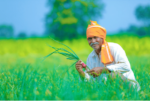Strengthening Rural Sustainability and Growth
With more than 65% of India’s population residing in villages, the future of the nation is deeply tied to the resilience of rural India. Challenges such as unpredictable monsoons, depleting groundwater, agricultural market fluctuations, and rapid technological advancements threaten the age-old farming traditions that form the backbone of rural life. However, initiatives like Kerala’s Kudumbashree Movement and Gujarat’s water conservation efforts showcase the remarkable adaptability and ingenuity of rural communities. Strengthening rural resilience in India is not just about achieving agricultural sustainability but also about safeguarding the cultural foundation of the world’s largest democracy.
Key Factors Driving Rural Growth in India
Infrastructure Development:
The expansion of rural infrastructure through flagship programs like the PM Gram Sadak Yojana (PMGSY) and Jal Jeevan Mission has significantly improved connectivity and access to basic amenities.
Better infrastructure enhances market access, supports local enterprises, and reduces regional inequalities.
Over the past 21 years, more than 7 lakh kilometers of rural roads have been constructed under PMGSY, contributing to the socio-economic development of rural areas.
Digital Inclusion and FinTech Penetration:
Increasing smartphone usage and the widespread adoption of platforms like Unified Payments Interface (UPI) and Aadhaar-enabled Payment Systems (AEPS) are transforming rural economies.
UPI transactions in rural and semi-urban retail stores grew by 118% in 2023, driven by affordable internet access via BharatNet and low-cost smartphones. This shift promotes financial inclusion and fosters rural e-commerce.
Agricultural Reforms and Allied Activities:
Government initiatives such as PM-KISAN and the National Livestock Mission have diversified rural incomes by promoting agribusiness and allied sectors like fisheries and horticulture.
The National Agriculture Market (eNAM) platform has enabled farmers to access competitive prices, improving farm-to-market efficiency.
As of January 2024, total agricultural credit disbursed reached ₹22.84 lakh crore, reflecting enhanced investment in the sector.
Rise of Rural MSMEs and Start-ups:
Policy support through programs like the Startup India Rural Program and MUDRA Yojana has boosted the growth of micro, small, and medium enterprises (MSMEs) in rural areas.
These programs provide credit access and skill training, fostering entrepreneurship. According to the National Sample Survey (NSS) 73rd Round, 31% of MSMEs are in manufacturing, with over 50% located in rural areas, generating sustainable livelihoods.
Decentralized Renewable Energy Initiatives:
Programs like PM-KUSUM, promoting decentralized solar power and clean energy, have reduced energy costs in rural areas while decreasing reliance on traditional fuels.
India’s renewable energy installed capacity increased by 24.2 GW (13.5%), reaching 203.18 GW as of October 2024. PM-KUSUM has benefited 2.46 lakh farmers by providing solar pumps, reducing input costs, and enhancing agricultural sustainability.
Health and Social Welfare Expansion:
Initiatives like Ayushman Bharat and the Pradhan Mantri Matru Vandana Yojana (PMMVY) have significantly improved healthcare and social security for rural populations.
Affordable healthcare and insurance schemes have reduced out-of-pocket medical expenses, increasing disposable income.
By May 2023, the Ayushman Bharat Pradhan Mantri Jan Arogya Yojana (AB PM-JAY) recorded 5 crore hospital admissions, with a total expenditure of ₹61,501 crore under the scheme.
Rural Tourism and Cultural Heritage:
Rural tourism, promoted under initiatives like Dekho Apna Desh, is generating new income opportunities by leveraging India’s cultural diversity and rural industries tied to GI Tags.
States such as Rajasthan and Kerala have developed eco-tourism circuits, attracting both domestic and international tourists while boosting rural economies.
Women Empowerment and SHGs:
Women’s Self-Help Groups (SHGs), supported by the National Rural Livelihood Mission (NRLM), are transforming rural communities by encouraging women’s economic participation.
With over 8.7 crore women now part of SHGs, totaling over 81 lakh groups, this empowerment has led to better decision-making, improved family welfare, and increased rural household incomes.

Key Issues Related to India’s Rural Landscape
Agrarian Distress and Low Income Levels:
India’s rural economy remains predominantly agriculture-based, but the sector is plagued by fragmented landholdings, low productivity, and erratic weather patterns exacerbated by climate change.
Farmers continue to struggle with declining incomes despite various government support schemes.
According to a NABARD report, the average monthly income of a farming household across all sources was just ₹13,661 in 2021-22. Additionally, agriculture’s contribution to India’s GDP dropped from 35% in 1990-91 to 15% in 2022.
Inadequate Health Infrastructure:
Rural India faces a severe shortage of healthcare facilities, trained professionals, and awareness, resulting in poor health outcomes.
Flagship programs like Ayushman Bharat are hindered by infrastructure gaps, particularly in remote areas.
A survey revealed that only 25% of the semi-rural and rural population has access to modern healthcare within their vicinity. Moreover, approximately 75% of India’s healthcare resources are concentrated in urban areas, which house only 27% of the population, leaving rural areas underserved.
Educational Inequality and Digital Divide:
While school enrollment rates have improved under schemes like the Samagra Shiksha Abhiyan, rural education continues to suffer from inadequate infrastructure, teacher shortages, and limited digital access.
The Pratham Foundation reported that 43% of children aged 14-18 struggle to read sentences in English.
The ASER survey highlighted that 25% of rural children cannot read a Class 2-level text in their regional language. Furthermore, inconsistent internet penetration has restricted access to online learning opportunities.
Unemployment and Underemployment:
Despite initiatives like MGNREGA, rural India faces high levels of unemployment and disguised underemployment, particularly among its youth.
Seasonal agricultural work fails to ensure steady income, prompting migration to urban areas in search of jobs.
The rural unemployment rate rose to 9.3% in June 2024 (CMIE), while a significant portion of the rural workforce remains trapped in disguised employment.
Lack of Access to Safe Drinking Water and Sanitation:
Although the Jal Jeevan Mission has made progress, many rural households still lack consistent access to clean drinking water and proper sanitation facilities.
Behavioral and infrastructural challenges continue to perpetuate open defecation in some areas.
As of September 2023, only 67% of rural households had access to clean water through functional household tap connections. Furthermore, groundwater in 12 Indian states contains uranium levels beyond permissible limits, posing health risks.
Climate Change and Environmental Degradation:
Rural livelihoods are highly vulnerable to climate change, which has intensified droughts, floods, and soil degradation, severely affecting agriculture and allied activities.
Deforestation and poor waste management practices further compound environmental issues.
In recent years, central India has experienced a threefold increase in extreme rainfall events, leading to frequent flash floods that cause substantial socio-economic losses, particularly in rural areas.
Social Inequalities and Gender Disparities:
Caste-based discrimination, gender inequality, and the lack of opportunities for marginalized communities remain deeply entrenched in rural India.
Women often face restricted access to education, healthcare, and employment opportunities.
According to the WEF Global Gender Gap Report (2017), 66% of women’s work in India is unpaid, with most of these women residing in rural areas, highlighting their financial exclusion.
Financial Exclusion and Credit Constraints:
Access to formal credit remains a major challenge for rural households, which often rely on informal moneylenders who charge exorbitant interest rates.
Despite schemes like MUDRA Yojana, small and marginal farmers frequently face inadequate institutional credit support.
A 2020 report revealed that 41% of small and marginal farmers still depended on informal credit sources, even though 59% availed credit through formal institutions.
Weak Local Governance and Bureaucratic Inefficiency:
Panchayati Raj Institutions (PRIs) often lack adequate funds, capacity, and autonomy, undermining the implementation of rural development programs.
Corruption and bureaucratic inefficiencies delay the benefits of schemes, leading to suboptimal outcomes.
For instance, in the Public Distribution System (PDS), corruption and inefficiencies have diverted food grains meant for rural households to the black market. In Uttar Pradesh, investigations uncovered a scam where local officials colluded with ration shop owners to deprive beneficiaries of their entitlements.
Measures to Promote Rural Growth and Resilience
Expanding Climate-Smart Agriculture (CSA):
Encourage the adoption of CSA practices such as crop diversification, agroforestry, and precision farming to minimize vulnerabilities to climate change.
Integrate initiatives like PM-KUSUM with localized irrigation systems and renewable energy.
For example, farmers in Gujarat’s Banaskantha district are using solar-powered irrigation systems, leading to reduced water wastage and improved crop yields.
Integrating Technology in Rural Governance:
Utilize technology to enhance the efficiency of rural governance through platforms like e-Gram Swaraj, ensuring transparent fund allocation and monitoring.
Linking Digital India initiatives with Panchayati Raj Institutions (PRIs) can improve service delivery and accountability.
The e-Panchayat Mission Mode Project by the Ministry of Panchayati Raj aims to make Panchayats more transparent and accountable.
Strengthening Public-Private Partnerships (PPPs):
Promote private sector involvement in skill development, infrastructure creation, and healthcare through rural-centric PPP models.
Corporate Social Responsibility (CSR) initiatives can enhance the impact of government programs.
For instance, ITC’s e-Choupal provides farmers with real-time market information and access to quality inputs, boosting their incomes.
Promoting Integrated Rural Entrepreneurship:
Support diversified rural entrepreneurship by establishing hubs for agri-processing, handicrafts, and eco-tourism.
Link MUDRA loans with skill development and capacity-building programs to enhance outcomes.
For example, the Dastkar initiative in Rajasthan connects rural artisans to national markets, significantly increasing household incomes.
Enhancing Local Water Governance:
Empower Gram Panchayats and Self-Help Groups (SHGs) to implement water conservation projects like watershed management, rainwater harvesting, and decentralized water systems.
Scale up successful initiatives such as Maharashtra’s Jalyukt Shivar Abhiyan, which has rejuvenated 11,000 villages by increasing groundwater levels and reducing crop failures.
Mainstreaming Renewable Energy in Rural Development:
Implement solar micro-grids, biogas plants, and wind energy projects to meet rural energy demands sustainably.
Expand schemes like PM-KUSUM and introduce incentives for renewable energy adoption.
Villages like Dharnai in Bihar, powered entirely by solar energy, demonstrate how energy reliability can drive entrepreneurship and education.
Reforming Agricultural Marketing Systems:
Enhance the eNAM platform by improving digital literacy among farmers and expanding physical market infrastructure.
Encourage direct farmer-to-consumer sales through Farmer Producer Organizations (FPOs).
The success of Sahyadri Farms in Maharashtra, which eliminated middlemen and provided farmers with better incomes, illustrates the potential of robust rural marketing reforms.
Transforming Rural Transport and Connectivity:
Expand rural road networks under PM Gram Sadak Yojana (PMGSY) and develop multimodal transport systems to improve market access.
Complement this with enhanced digital infrastructure under BharatNet for seamless e-commerce integration.
For instance, improved road connectivity in Bihar’s Bhagalpur silk hub has boosted exports, directly benefiting rural livelihoods.
Developing Sustainable Rural Housing:
Introduce disaster-resilient housing technologies by combining traditional materials with modern methods under PM Awas Yojana (Gramin).
Promote green housing designs to reduce energy costs and environmental impact.
Villages in Kashmir rebuilt after the 2014 floods with eco-friendly reinforced concrete now serve as examples of cost-effective, climate-resilient housing.
Building Grassroots Disaster Management Systems:
Equip rural communities with disaster preparedness training, early warning systems, and locally tailored evacuation plans.
Expand State Disaster Response Forces (SDRF) into rural areas.
Odisha’s cyclone shelter network, combined with community training, saved thousands of lives during Cyclone Fani in 2019, highlighting the importance of proactive disaster management.
Revitalizing Cooperative Institutions:
Strengthen cooperative societies to address gaps in credit, marketing, and procurement in rural areas.
Digitize their operations and introduce skill enhancement programs to improve efficiency.
The Amul model of cooperative societies has created self-reliant rural economies in the dairy sector, ensuring consistent farmer incomes.
Fostering Knowledge-Based Agriculture:
Establish village-based knowledge hubs to train farmers in modern techniques like hydroponics, organic farming, and digital tools.
Connect these hubs with Krishi Vigyan Kendras (KVKs) for research-backed solutions.
Villages adopting precision farming have reported reduced fertilizer usage, resulting in cost savings and environmental benefits.
Empowering Youth with Digital and Green Skills:
Provide rural youth with training in green jobs and digital economy opportunities through the Skill India Mission.
Partner with private organizations to offer certifications in renewable energy, IT, and logistics sectors.
Building rural resilience in India is crucial for securing the nation’s future. Achieving this goal demands a comprehensive approach that combines infrastructure development, technological integration, and socio-economic empowerment. Although challenges such as agrarian distress and inadequate healthcare infrastructure remain, India’s rural growth journey showcases promise through innovative strategies and robust policy interventions. Harnessing the combined efforts of government schemes, private-sector involvement, and community-led initiatives can unlock the vast potential of rural India.
The End of the Blog: Strengthening Rural Sustainability and Growth

|


















